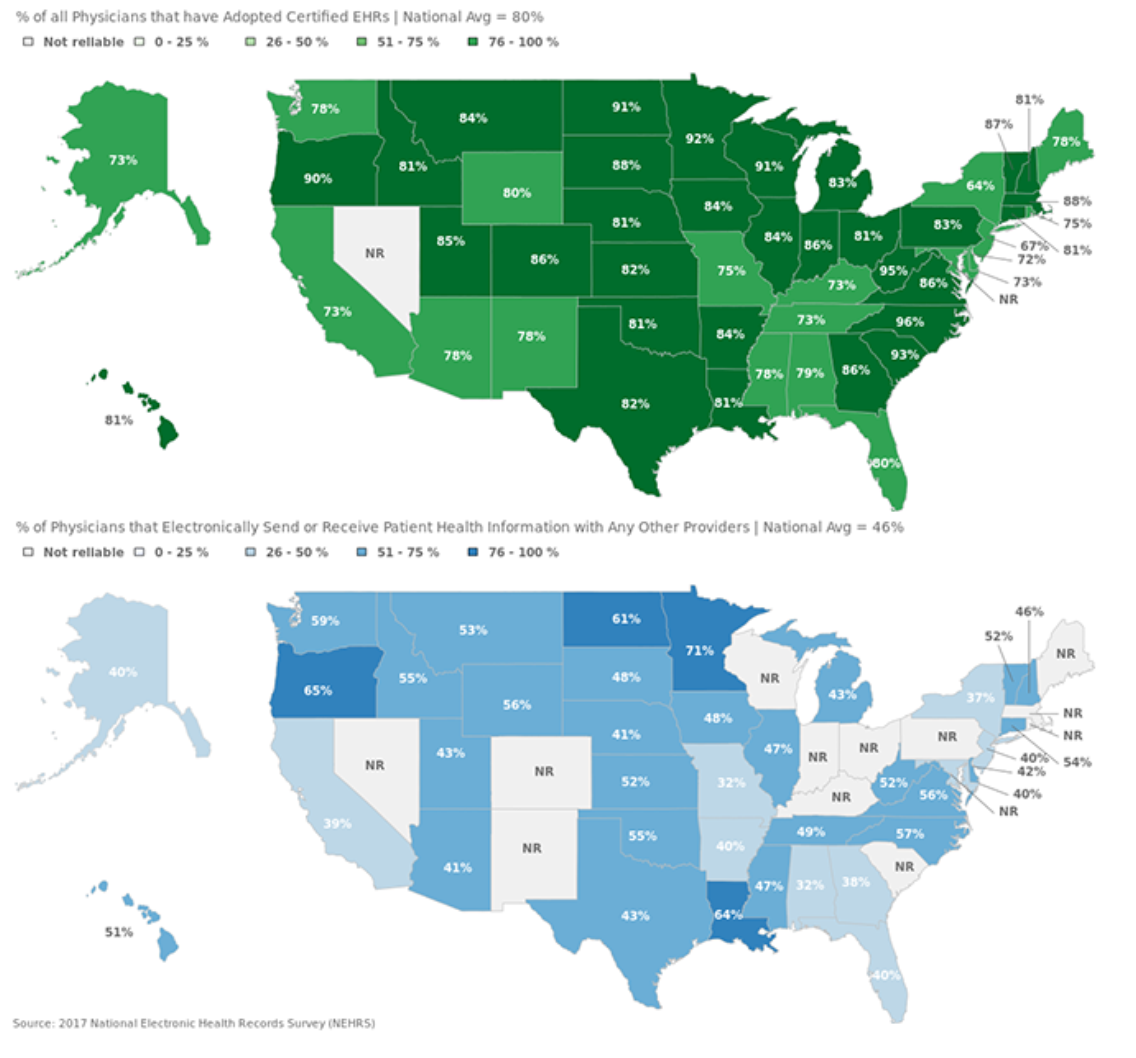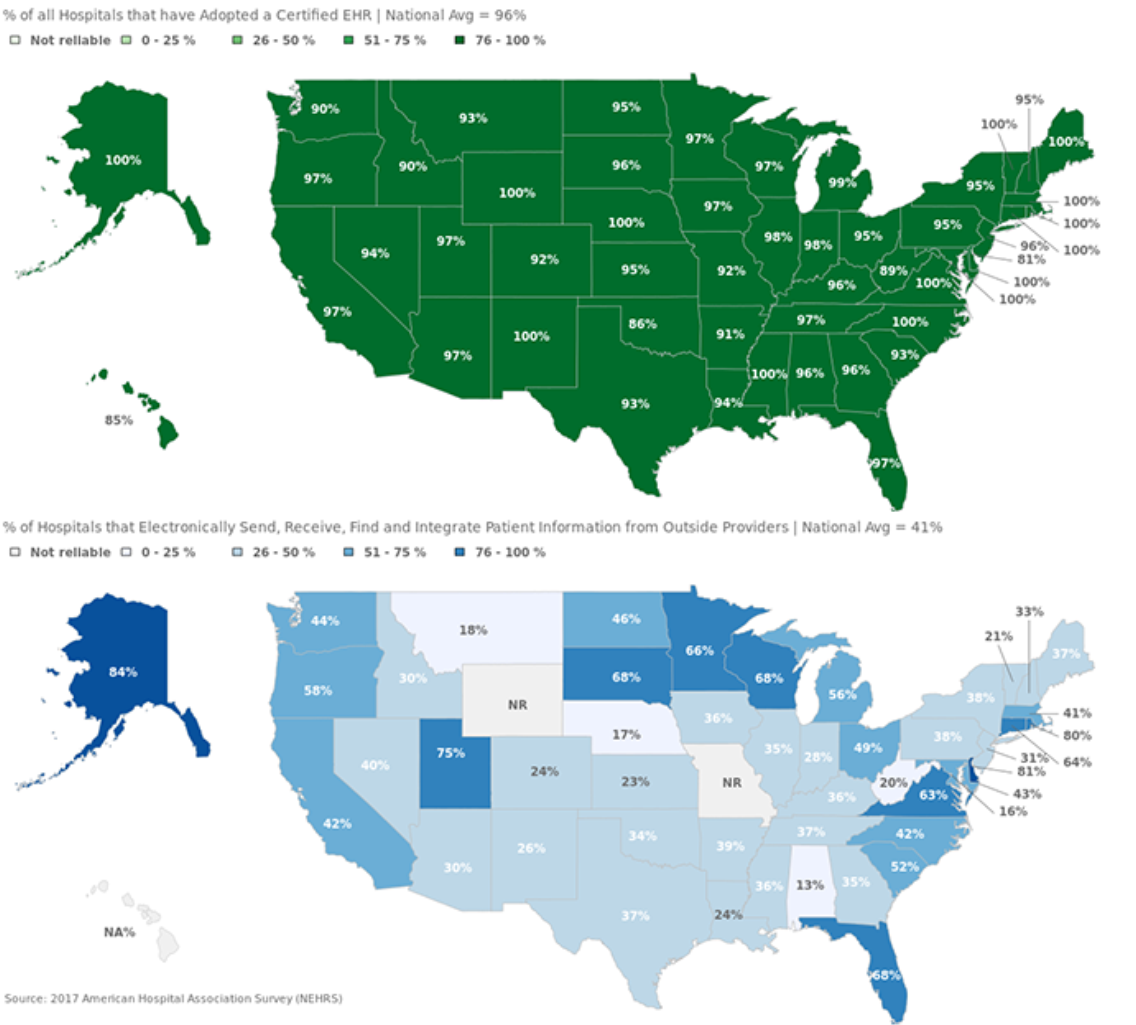
Getty Images/iStockphoto
Using Cloud-Based Faxing to Eliminate Healthcare Inefficiencies
Providers still rely on fax machines for health data exchange, but cloud-based faxing can overcome legacy fax technology challenges, including increased security and scalability.
The healthcare industry is working toward widespread interoperability and streamlined digital workflows, but the industry has present-day inefficiencies that existing technology can efficiently address.
Healthcare organizations need to be able to share health information to ensure high-quality care and patient safety. Policymakers and developers are making headway toward achieving interoperability— the Argonaut and Da Vinci projects are two shining examples — that will eventually lead to document workflow improvements. But the benefits of EHR-to-EHR or EHR-to-other health IT systems are still on the horizon. Even still, policymakers continue to emphasize the need to improve transitions of care and close care gaps, which both require timely and robust information sharing.
Despite the desire of industry leaders to axe the fax, faxing remains a vehicle for efficient health data exchange. Why else would 75 percent of all medical communication occur via the fax, or a majority of physicians choose the phone or fax to manage prior authorizations?
The reliance on traditional faxing technology for health data exchange, however, presents a host of workflow challenges and risks.
First, healthcare organizations need to maintain hardware and software to support legacy fax equipment. Second, staff must spend their limited time in the office physically retrieving, integrating, and destroying documents to access and protect critical health information, manual processes that delay information reaching its destination quickly. Third, each fax machine is an endpoint liability, and sensitive data meant for authorized personnel could be lost or made ripe for the taking and expose covered entities to HIPAA violations. Lastly, fax machines are location-dependent and incapable of supporting the increased mobility and flexibility sought by providers.
While the fax is an easy target — a vestige of pre-internet exchange — the technology has evolved and found a home in the cloud. The result is cloud faxing that increases security, efficiency, and the likelihood of providers to achieve interoperability goals set by federal programs.
LIMITED INTEROPERABILITY LEADS TO INEFFICIENT WORKFLOWS
The EHR Incentive Programs represent a remarkable and lasting achievement for the Department of Health & Human Services (HHS) in moving the vast majority of providers from paper to electronic records. But the programs have fallen short of their more ambitious goal.
According to the 2017 National Electronic Health Records Survey (NEHRS), 96 percent of hospitals and 80 percent of office-based physicians reported using certified EHR technology (CEHRT) that met health IT certified criteria set by the Office of the National Coordinator (ONC).
Despite high levels of EHR adoption, widespread interoperability using CEHRT remains a way’s off. That same NEHRS data revealed that only 41 percent of hospitals and 46 percent of office-based physicians have the capability to send or receive patient health information with other providers digitally.
No correlation existed between EHR adoption and information sharing despite the efforts of HHS and its many departments to make interoperability the ultimate goal of the EHR Incentive Programs. And that doesn’t account for the numerous providers that were ineligible for incentives and lag well behind hospitals and physician practices in their technical capabilities to document and exchange patient data.
Taken all together, these data paint a dark portrait of the digital exchange of health data in the United States.
HHS continues to say all the right things about the need for advancing healthcare interoperability. The federal agency has increased its efforts to promote health data exchange electronically by working to support the use of health IT standards — Fast Healthcare Interoperability Resources (FHIR) chief among them. These standards enable secure access to data in EHR and other health IT systems using HL7 standards for clinical document architecture.
“By outlining specific requirements about electronic health information, we will be able to help patients, their caregivers, and providers securely access and share health information. These steps forward for health IT are essential to building a healthcare system that pays for value rather than procedures, especially through empowering patients as consumers,” said HHS Secretary Alex Azar.
In February, the Centers for Medicare & Medicaid Services (CMS) officials presented potential policy changes via the Interoperability and Patient Access proposed rule. The current administration wants application programming interfaces — i.e., FHIR — to unlock and enable the sharing of accurate and timely health data between providers, payers, and patients. For its part, ONC released a notice of proposed rulemaking to improve the interoperability of health information at no cost to patients as part of its mandate to implement provisions of the 21st Century Cures Act.
In combination with the Quality Payment Program’s Merit-based Incentive Payment System (MIPS) and Advanced Alternative Payment Models (APMs), HHS looks to make the electronic exchange a condition of participation in Medicare. This requirement should drive healthcare organizations to take the steps necessary to make information sharing rather than data blocking a core part of America's healthcare system.
But might federal officials be a bit too farsighted in their outlooks? Could existing technology already fill the gaps in information sharing?
MEETING HEALTHCARE’S PRESENT NEEDS
Cloud-based faxing is a game-changer and a real means of efficient interoperability-enabled workflows. Healthcare organizations can say goodbye to legacy fax technology and reap the benefits of secure and scalable cloud faxing.
First, cloud service providers take ownership of maintaining fax infrastructure, allowing IT departments to focus on support clinicians and their use of technology to improve patient care. Second, cloud-based faxing integrates with existing EHR technology to enable clinical end-users to view timely and relevant data in a centralized location. Third, cloud faxing supports the end-to-end encryption of transmitted information, restricting access to authorized users and allowing IT departments to audit access. Fourth, faxes are exchanged and stay within a secure environment rather than on the common-area fax machine. Fifth, within a cloud-based environment, staff can send, receive, and review faxes wherever they are using a multitude of devices (e.g., browsers, email, mobile apps). And lastly, APIs are available that give healthcare organizations the means to integrate data from faxes directly into the provider’s EHR technology — truly streamlined workflows.
If those benefits aren’t enough to prove the point, then a simple use case demonstrates why cloud faxing is the solution providers need to consider.
Located in Birmingham, Alabama, UAB Medicine is the state's premier medical facility and one of the largest academic medical centers in the country. Leaders at the health system realized that the organization could not effectively manage the large volume of faxes being received, ranging from patient appointment requests to physician orders for treatment.
As an organization with a publicly available fax number, UAB Medicine had no control over the number of faxes coming into the system. Manual intervention was necessary to sort through fax-based communications, scan and integrate information into its EHR system, and finally destroy physical documents.
Faced with these efficiencies, UAB Medicine sought a new digital fax solution and eventually settled on a j2 Cloud Services and soon experienced the benefits of a truly digital approach:
- Improved security and compliance
- Reduced manual paper-handling processes
- Elimination of physical fax equipment and collateral
- Enhanced patient and employee satisfaction
UAB Medicine can now rely on a cloud faxing solution that enables the organization to focus on its real mission: caring for patients. Time and resources spent managing the flow of paper-based exchange are now spent on patients at the point of care and coordinating with other providers to deliver truly patient-centered care.
True healthcare interoperability is only a matter of time. By building consensus and creating a uniform method for exchanging sensitive data, providers and patients of tomorrow will be able to experience the full benefits of information technology. But healthcare organizations cannot afford to wait. Data-driven healthcare is happening now, and cloud-based faxing can be a catalyst for change.


________________________________________________________________________________________________________________
About J2 Global:
eFax Corporate® recently became the first major Cloud Fax provider to achieve HITRUST CSF® Certification. With eFax Corporate, faxes can be securely sent and received by email, from any desktop, tablet, smartphone or from within EHRs via APIs – helping organizations boost productivity, enhance regulatory compliance and eliminate on-site fax hardware





